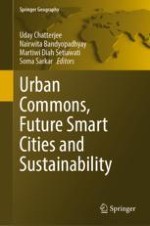2023 | OriginalPaper | Chapter
6. Sustainable Urban Management of the Mainstream and the Margin: Reflecting on Delhi and Its Peri-Urban Transformation
Authors : Sanchari Mukhopadhyay, Sucharita Sen
Published in: Urban Commons, Future Smart Cities and Sustainability
Publisher: Springer International Publishing
Activate our intelligent search to find suitable subject content or patents.
Select sections of text to find matching patents with Artificial Intelligence. powered by
Select sections of text to find additional relevant content using AI-assisted search. powered by
